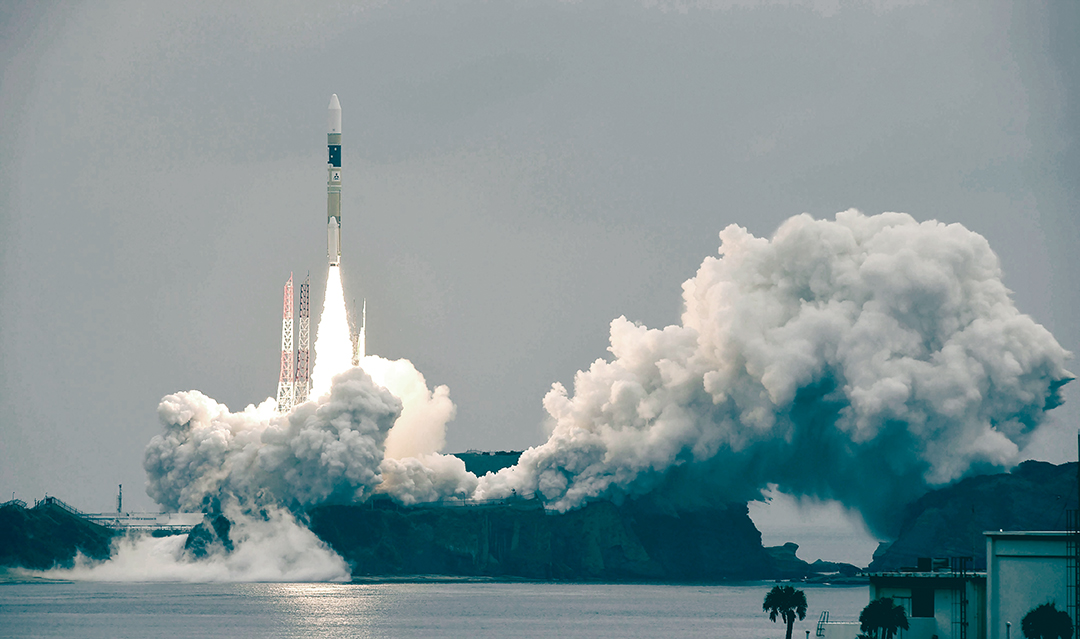How small satellites are revolutionizing space
Erica Sullivan, Los Alamos National Laboratory
On a clear morning in Sriharikota, India, in mid-February 2017, a rocket launched carrying a record-breaking 104 satellites, including 101 CubeSats.
CubeSats are nothing new. A type of small satellite comprising units measuring 10 centimeters by 10 centimeters by 10 centimeters, they were first developed at Cal Poly and Stanford universities in the late 1990s as a training tool for aerospace engineering students. (“SmallSats” are lighter than 500 kilograms; so all CubeSats are SmallSats, but not all SmallSats are CubeSats.) It wasn’t long before governments began to look for ways to use CubeSats and other small satellites to bolster national security.
It’s no coincidence that the rise in interest in these smaller-than-a-dorm-refrigerator satellites coincided with the awareness that existing satellites were vulnerable. In 2007, China proved this when it used a missile to obliterate one of its own satellites. Then there’s the threat of cyber attack. The recent ransomware virus that infected hundreds of thousands of computer systems around the globe and shut down hospitals and train stations was a stark reminder of the power of hackers. If that cyber attack was so debilitating on Earth-based systems, imagine what a carefully orchestrated cyber attack on a space-based asset would do. The results could be catastrophic.
Virtually every military mission relies, to some extent, on satellites. Communications satellites not only provide reliable communications for command, they control land, sea and air forces as well. Meteorological satellites provide up-to-date weather information to field units in every branch of the military. Navigation satellites provide accurate positioning — within a few meters — for troops, planes and ships. Space-based surveillance systems provide treaty-monitoring capability during peacetime and serve as essential warning systems during conflict.
For the civilian arm of the government, satellite imagery is indispensable for disaster planning and response, mapping, urban planning and traffic monitoring. Then there are commercial uses: satellite phones, the internet, television, navigation and commercial tracking, resource exploitation — even predicting the weather for air travel or planting crops.
A successful attack on just one of those satellites could have far-reaching negative consequences for homeland defense and the economy.
Technological advantages
What if, instead of one giant satellite providing critical national security functions, there were a hundred small satellites doing the same thing? The target would not only be smaller, but it would be dispersed — making a cyber criminal’s job significantly more difficult.
Small satellites boast a lot of positives. First and foremost, they’re inexpensive. The average large satellite can cost anywhere from U.S. $500 million to U.S. $1 billion or more to build and launch. That’s a hefty price for any budget. Small satellites, by comparison, are a bargain.
For example, Los Alamos National Laboratory has built and launched a set of CubeSats into low-Earth orbit (LEO) for a U.S. Department of Defense sponsor at a cost of about U.S. $150,000 per satellite. Also, the less expensive hardware means more technology can be acquired — enabling greater geographic coverage for observation and detection missions such as Earth/wave movement, seismic and volcanic activity detection, and atmospheric measurements.
Furthermore, by using less expensive platforms such as CubeSats and SmallSats, space scientists could test advanced concepts such as reconfigurable computing in space. In the past, once a satellite was in orbit, operators could do little to alter it. It would operate according to its original programming. Not so with CubeSats, which space scientists have made reprogrammable to allow for mission changes and improvements.
It also allows for a more agile approach to space hardware. Constrained mission needs enable rapid, focused development. While a large satellite can take a decade to design and build, space scientists can do the same with a CubeSat in a year or less. These satellites also enable more testing in the operational environment rather than in simulated environments on the ground, and they allow cutting-edge technologies to be incorporated as they hit the market. Instruments and components can be tested in space before they’re integrated into larger platforms for the final mission. These demonstration and validation missions greatly inform the design of instruments for any size satellite.
Revolutionizing engineering
For these reasons, small satellites revolutionize how scientists engineer space systems. A staggering 2,400 SmallSats and CubeSats will be launched during the next six years, experts estimate. In the past, the commercial, government and academic sectors used SmallSats equally, but commercial use is expected to leapfrog the rest soon. Over the next three years, commercial use of small satellites is anticipated to account for more than 70 percent of launches.

Small satellites get to LEO at a lower cost and subject the satellite to fewer radiation effects. Also, LEO allows the satellite to be closer to targets, improving the resolution of imagery, enabling lower-power communications and decreasing communications lags.
Increasingly, the government, industry and academia are looking for ways to use small satellites in orbits beyond LEO. For example, at Los Alamos, scientists and engineers would like to use small satellites and CubeSats for deep space and interplanetary exploration missions. For these technically challenging missions, smaller, less expensive satellites create the opportunity to spread technical risk over redundant systems and to collect data from more locations.
Managing risk, fostering cooperation
A leading challenge is to develop faster and smarter than the rest. The U.S. and its allies and partners must acknowledge that many nations now have access to space, and it must become a strategic military priority to introduce resiliency and redundancy into space systems. In short, nations must spread the risk. The good news is that advances in distributed computing and machine learning mean scientists can create a distributed network that can heal itself. So, if one satellite out of a constellation of a hundred is damaged, the others can compensate.
Also, the technology must be optimized. If more small satellites are gathering more data than ever before, the next question becomes: How will that data be processed? Then of course, there are myriad other questions as well: How do nations secure their networks? How do nations make their satellites impervious to space weather? Los Alamos, for one, is leveraging decades of experience developing space instruments, understanding of the extreme space environment and supercomputing prowess to answer these questions.
It’s not only about developing the right technology, however. The U.S. and its allies and partners must also plan carefully — not just on a national scale but a global one. Just as the international community has jointly designated international shipping and air traffic routes, the international community needs to collaborate to figure out how to work cooperatively to regulate space.
The reality is, during the next few decades, space will become more and more crowded, and how it’s used will change the world. That change is coming quickly. Will the international community rise to meet these challenges before they overwhelm us? If the answer is yes, nations must start working together to solve these issues now.


